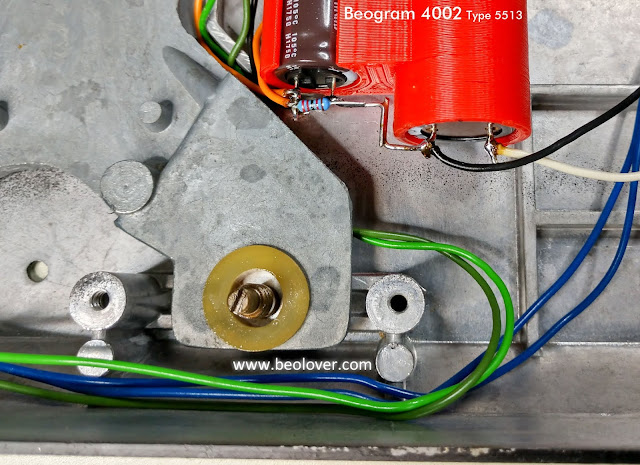Today I moved the Beogram 4002 from the work bench to the test bench.
This project is heading into the final stretch of restoration tasks.
I went through service manual checks (and adjustments) as well as adjusting the three main sensors in the Beogram: The record detection sensor, the arm position sensor and the tracking sensor.
For the record detection sensor I followed
Beolover's instructional video. I had already installed the adjustment trimmer where I could set the baseline 1TR3 collector voltage. That is the DC voltage at the collector when the Beogram is on and the detector is not picking up any signal from the rotating, empty platter.
For the non-rotating platter scenario the 1TR3 collector is adjusted to about 4 VDC. This is also the voltage the collector should measure if a record is present on the platter.
While set up with the DMM I measured and adjusted the tangential arm position sensor for 5 VDC at the collector of the 4IC1 device (when the sensor lamp is shining through a clear section of the position scale).
Now that those adjustments are made I moved the trimmer for the record detection circuit to the component side of the main board where it belongs. Then I set the Beogram up to measure the 1TR3 collector with my oscilloscope when the record detection circuit is reading an empty, rotating platter.
I measured the expected signal. It is actually a little higher than other Beogram 400x units I have restored. It peaks at around 8 volts and drops down to zero volts as the sensor reacts to the sensor lamp hitting the empty Beogram platter.
Now that the detection circuit adjustment trimmer is moved out of the way and over to the component side of the main board I can take care of the various service manual adjustments.
I used my usual gauge to check and adjust the platter to fixed arm height of 23mm.
Next, I adjusted the tonearm set down limit so the MMC stylus sits about a half a millimeter above the low section of the platter rib.
I also performed the usual check for the tonearm length and parallelism of the arm assembly by checking that the stylus travels a straight line from the edge of the platter to the center.
The tonearm tracking force was calibrated to 1.0 gram and I checked that the 1.2 gram position of the knob also measures 1.2 grams on the scale.
After those adjustments I was finally able to adjust the tracking sensor sensitivity. No photos of that as you really can't capture the setting with a still photo. Details of the adjustment procedure can be seen in
this Beolover video.
Next were the calibration of the platter speeds: 33⅓ RPM and 45 RPM.
The final adjustments were for the height of the floating chassis to the Beogram deck so the platter surface was level with the deck.
This Beogram is almost ready for some listening tests. All I have left is to reattach the cabinet trim and the dust cover.




















































